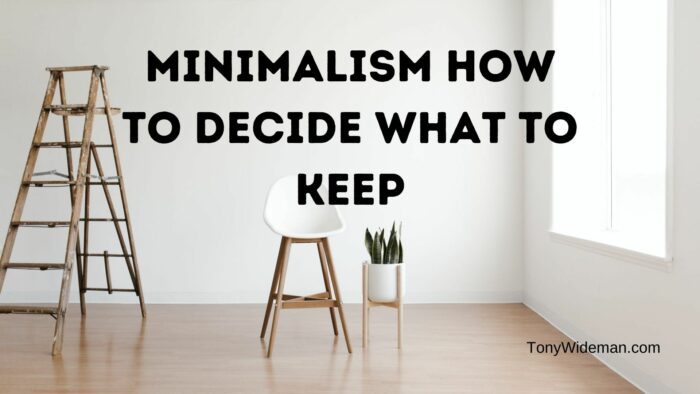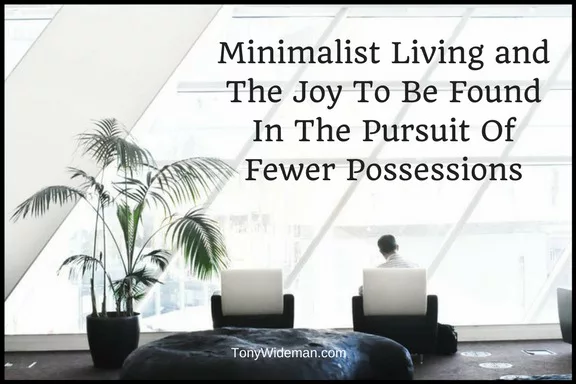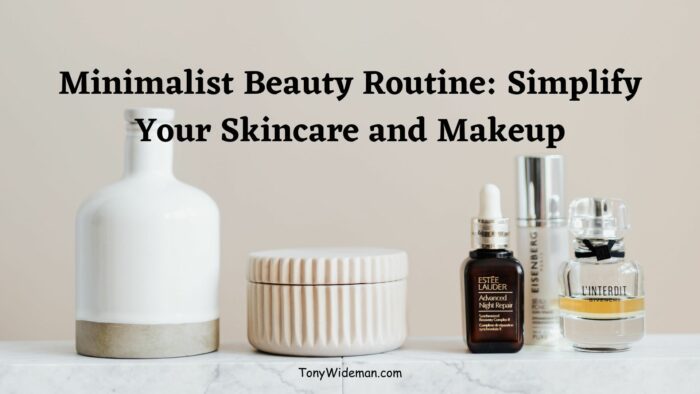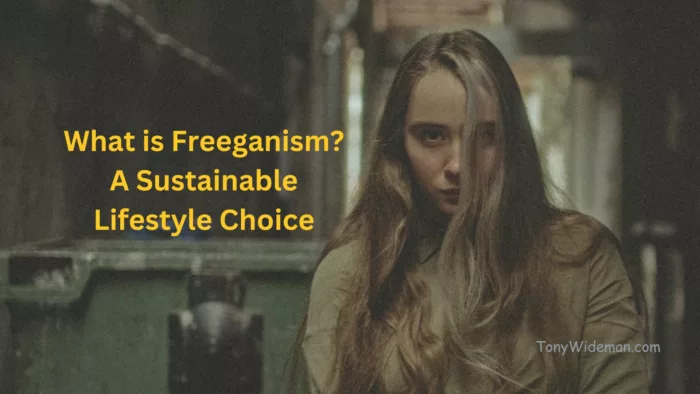Minimalism and Buyer’s Remorse: Navigating Modern Consumerism
In the era of consumerism, where the latest gadgets and trends bombard us, minimalism offers fresh air. It promises simplicity, clarity, and a life unburdened by material excess. However, embracing minimalism is not without its challenges.
One of the significant emotional hurdles faced by minimalists is buyer’s remorse. This post delves deep into the interplay between minimalism and buyer’s remorse, providing insights and strategies to navigate this complex relationship.
Introduction
Buyer’s remorse is a common experience among consumers, particularly in today’s consumer-driven society. This phenomenon occurs when a person regrets a purchase shortly after making it.
While it can happen with any purchase, it is often associated with big-ticket items such as cars, homes, and expensive gadgets. I will dive deeply into the causes, consequences, and strategies to overcome buyer’s remorse, providing you with the insights needed to make more confident purchasing decisions.
Understanding Minimalism
Minimalism is more than a lifestyle choice; it is a mindset that emphasizes intentional living. Minimalists aim to create space for what truly matters by reducing physical possessions.
This could mean different things to different people, but the core principle is to focus on quality over quantity, the purpose and value of each item we own.
The Philosophy Behind Minimalism
The minimalist philosophy encourages us to question our consumption habits and consider each item’s purpose and value.
This introspective approach often leads to a more meaningful and fulfilling life, free from the constant pressure to acquire more.
What is a Buyer’s Remorse?
Buyer’s remorse is a form of cognitive dissonance in which the discomfort of the purchase conflicts with the individual’s values or beliefs.
This discomfort can stem from various factors, including financial concerns, the perceived value of the item, or simply the fear of making the wrong choice.
Common Causes of Buyer’s Remorse
- Financial Stress: The most significant trigger is often the financial strain accompanying a purchase. High costs can lead to second-guessing and anxiety.
- Overhyped Expectations: When an item doesn’t meet the expectations of advertisements or reviews, disappointment ensues.
- Peer Pressure: Social influences and the desire to keep up with peers can lead to regret.
- Impulsive Buying: Purchasing on a whim without proper consideration can result in remorse.
- Lack of Need: Buying something unnecessary or without a clear purpose can lead to regret.
Buyer’s Remorse: A Common Experience
Buyer’s remorse is the sense of regret or anxiety that follows a purchase. This feeling can be particularly acute for minimalists committed to reducing clutter and only buying what is essential.
Despite their best efforts, minimalists are not immune to the lure of consumer culture, and sometimes, they regret a purchase.
The Psychology of Buyer’s Remorse
Buyer’s remorse is rooted in several psychological factors, including cognitive dissonance, opportunity cost, and the paradox of choice. Buying something that does not align with our values or expectations creates a mental conflict known as cognitive dissonance.
Additionally, the awareness of what we could have done with the money (opportunity cost) and the overwhelming array of choices available (paradox of choice) contribute to this regret.
Strategies to Overcome Buyer’s Remorse of Minimalism
While buyer’s remorse is a shared experience, effective strategies exist to mitigate it. Here are some practical steps that minimalists can take to avoid and manage buyer’s remorse:
1. Embrace Intentional Buying
Intentional buying is at the heart of minimalism. It involves making deliberate and thoughtful purchasing decisions.
Before buying anything, minimalists should ask themselves if the item adds value to their life. This conscious approach helps prevent impulsive purchases that lead to remorse.
2. Implement a Waiting Period
A practical strategy I love to combat buyer’s remorse is implementing a waiting period before purchasing. Whether it is 24 hours or a month, this pause allows time to reflect on the necessity and desirability of the item. The initial urge to buy often fades, revealing that the purchase was not essential.
3. Focus on Experiences Over Material Goods
Minimalists often find greater satisfaction in experiences rather than material possessions.
Investing in experiences, such as travel, learning, or spending time with loved ones, can provide lasting happiness without the regret associated with physical items.
4. Simplify Decision-Making
The paradox of choice can be overwhelming and lead to buyer’s remorse.
By simplifying decision-making processes, such as creating a capsule wardrobe or limiting options, minimalists can reduce the anxiety and regret that come with too many choices.
5. Reflect on Past Purchases
Reflecting on past purchases and the emotions they evoked can provide valuable insights.
Minimalists should analyze previous instances of buyer’s remorse to understand their triggers and patterns. This reflection can inform future purchasing decisions and help avoid similar regrets.
6. Practice Gratitude
Gratitude is a powerful antidote to buyer’s remorse.
By focusing on what they already have, minimalists can cultivate contentment and reduce the desire for new acquisitions. Daily gratitude practices can reinforce the minimalist mindset and diminish feelings of regret.
Psychological Impact of Buyer’s Remorse
Experiencing buyer’s remorse can have several psychological effects.
It can lead to stress, anxiety, and even depression in severe cases. The constant worry about whether the right decision was made can significantly impact mental well-being. Understanding these effects is crucial in developing strategies to manage and overcome them.
How to Prevent Buyer’s Remorse
Pre-Purchase Strategies
- Research and Comparison: Thoroughly researching the product and comparing it with alternatives can help make an informed decision.
- Budgeting: Setting and sticking to a budget can prevent financial stress post-purchase.
- Evaluating Needs vs. Wants: Clearly distinguishing needs and wants can minimize unnecessary purchases.
- Seeking Reviews and Testimonials: Reading reviews and seeking testimonials from trusted sources can provide a realistic expectation of the product.
- Waiting Period: Implementing a waiting period before making a purchase decision can help assess the actual need and desire for the product.
Post-Purchase Strategies
- Utilizing Return Policies: Familiarizing oneself with the return policies and using them if necessary can alleviate regret.
- Focus on the Positives: Focusing on the positive aspects and benefits of the purchase can reduce feelings of remorse.
- Learning from Experience: Treating the experience as a learning opportunity for future purchases.
Practical Tips to Overcome Buyer’s Remorse
- Mindfulness and Reflection: Practicing mindfulness and reflecting on the reasons behind the purchase can help one understand and overcome remorse.
- Seeking Support: Talking to friends, family, or a financial advisor can provide new perspectives and reduce feelings of regret.
- Engaging in Positive Activities: Distracting oneself with positive activities can help shift focus away from regret.
- Professional Help: In severe cases, seeking professional help from a therapist can be beneficial.
The Role of Decluttering in Minimalism
Decluttering is a fundamental aspect of minimalism.
It involves removing unnecessary items from one’s life to create space for what truly matters. However, decluttering is not just about physical space; it also has emotional and psychological benefits.
Emotional Benefits of Decluttering
Decluttering can lead to a sense of accomplishment and peace.
By letting go of items that no longer serve a purpose, minimalists can free themselves from past regrets and focus on the present. This process can also reduce anxiety and stress, creating a more harmonious living environment.
Practical Decluttering Tips
To effectively declutter, minimalists can follow these practical tips:
- Start Small: Begin with a small area or category, such as a drawer or closet, to avoid feeling overwhelmed.
- Set Clear Goals: Define specific goals for each decluttering session to stay focused and motivated.
- Use the Four-Box Method: Sort items into four categories: keep, donate, sell, and discard. This method simplifies decision-making and streamlines the process.
- Regular Maintenance: Schedule regular decluttering sessions to maintain a minimalist lifestyle and prevent clutter from accumulating.
Minimalism as a Journey, Not a Destination
Embracing minimalism is a continuous journey rather than a one-time achievement.
Maintaining a minimalist lifestyle and avoiding buyer’s remorse requires ongoing effort and reflection. By adopting intentional living practices and focusing on what truly matters, minimalists can navigate the complexities of modern consumerism with grace and clarity.
Conclusion
Minimalism and buyer’s remorse are intertwined aspects of modern consumer culture.
While minimalism offers a path to simplicity and fulfillment, buyer’s remorse is an inevitable part of the journey. Buyer’s remorse is a natural part of the purchasing process, but it doesn’t have to overshadow the experience.
By understanding the psychological underpinnings of buyer’s remorse and implementing mitigation strategies, minimalists can enhance their quality of life and find lasting contentment.
Remember, every purchase is a learning opportunity, guiding us toward better financial and personal choices in the future.







